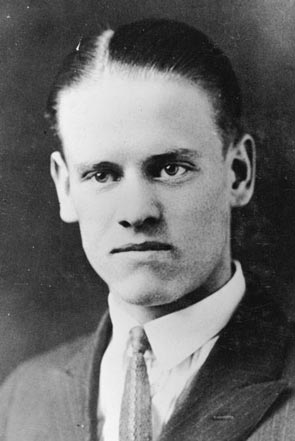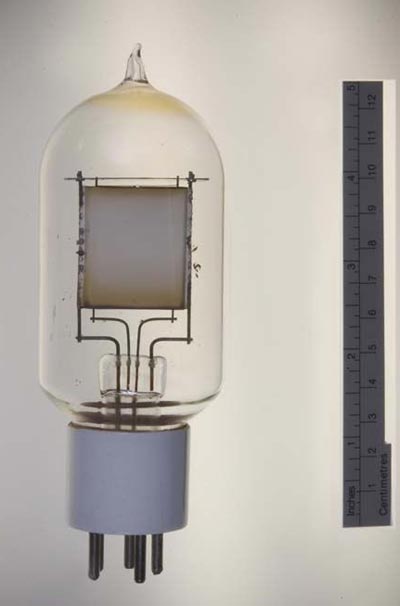Philo T. Farnsworth was born on a farm in rural Utah and grew up to invent the television. His invention of the dissector camera tube helped put the first images on television screens worldwide. Farnsworth brought the talents of science and education to the table, and his efforts changed people’s lives worldwide!

More of the Story
Farnsworth was born near Beaver, Utah, in 1906. He lived in a small log cabin with no electricity until he was twelve years old when his family moved to a ranch near Rigby, Idaho. Farnsworth enjoyed his high school chemistry and physics classes. He went to Brigham Young University and earned a certificate from the Junior Radio-Trician from the National Radio Institute. Farnsworth married Elma “Pem” Gardner, and together they had four sons.
An Inventor at an Early Age
When Farnsworth moved to Idaho, he was excited to live in a house with electricity. After he moved to Idaho when he was twelve, he built an electric engine and washing machine. At thirteen years old, he won a national contest for inventing a thief-proof lock.
When he was sixteen years old, Farnsworth drew a design for his chemistry teacher of an invention that he believed would transform electricity into pictures by controlling the speed and direction of fast-flying electrons. That means that Farnsworth began to design a television in high school!

Inventing the Television
Farnsworth wanted to make his design for transporting images using electricity a reality, but he did not have much money. He finally met two Californians who gave him money to test his idea. He took the design he completed in high school and the money and practiced different models until he got it right.
He transferred the first successful image—a simple line—in 1927 when he was twenty-one years old! Farnsworth worked for several companies during his life. His inventions and ideas were the forerunners of many products like radar, electron microscopes, and baby incubators.
Even though his inventions made a difference in people’s lives, very few knew that Farnsworth invented them. When he died, he did not have much money, and very few people knew who he was or his connection to his inventions.
Farnsworth’s Legacy
In 1985, a group of students from Ridgemont Elementary School in Salt Lake City wanted to recognize Farnsworth for his work. The students and their teacher asked state legislatures to place a statue of Farnsworth to represent Utah in Statuary Hall in Washington D.C. In 1990, Legislature agreed to allow a statute to represent Utah in Statuary Hall. The figure remained there until the 2000s when it was replaced by a statue of women’s rights leader Martha Hughes Cannon.
Farnsworth’s interest in science and education resulted in several inventions that changed culture, economics, politics, and even religion in Utah, the United States, and worldwide.
Keep Exploring!
Return to the People Who Made a Difference page here.
Return to the I Love Utah History home page here.